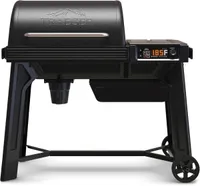Weber vs Traeger: which pellet grill should I buy?
I've tested both Weber and Traeger pellet grills; here's how to choose the right one for you
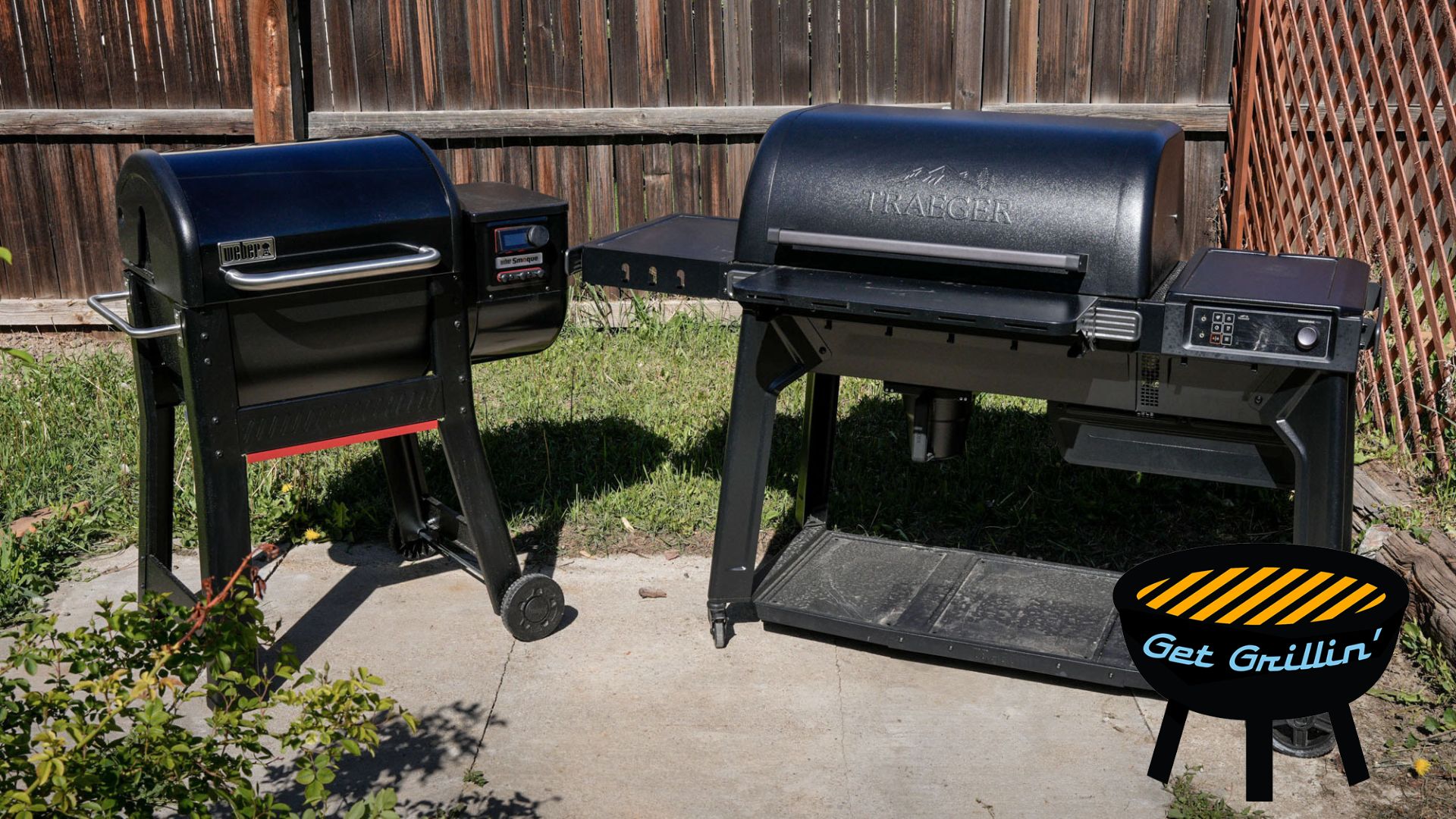
If you’re shopping for a pellet grill, chances are two major names have come up frequently in your search: Traeger and Weber. Both brands have been in the best grill game for a long time and are noted for their high-quality products.
If you’ve narrowed your search down to these two brands among the very crowded pellet grill market, deciding which one to buy can be a challenge. But it's Get Grillin' Week here at Tom's Guide, which means we're answering all your burning questions about how to choose the best grill for your yard.
Fortunately, I've tested both Weber's Smoque pellet grill and Traeger's Woodridge Pro, so if you need some guidance on which brand is right for you, I'm your guy.
First things first, you’ll be getting a high-quality grill either way. But it helps to understand how pellet grills work and what they’re best used for before making your purchase. And if you’re specifically choosing between a Weber and a Traeger, a simple spec comparison may be enough to sway you one way or another.
But if your questions run deeper than that, here’s an overview of how you can choose between a Weber and a Traeger pellet grill.
1. What's your priority?

How you intend to use your pellet grill has the biggest impact on determining which is best for you. If, for example, you expect to spend more time grilling at high temperatures and less time smoking at low temperatures, be sure to choose a unit that can provide a high-heat sear. You’ll want a pellet grill that can handle a 500-degree to 550-degree temperature for grilling meats like steaks.
If, conversely, you intend to do a lot more smoking with your pellet grill — which, in my experience, is really the biggest benefit to owning a pellet grill of any kind — you’ll want to make sure your pellet grill can reach low temperatures. I usually smoke around 180 degrees, though a 200-degree minimum temperature may be suitable for your needs.
Get instant access to breaking news, the hottest reviews, great deals and helpful tips.
I usually smoke around 180 degrees, though a 200-degree minimum temperature may be suitable for your needs.
Some pellet grills feature some sort of ‘super smoke’ setting at low temperatures, which optimizes the amount of smoke and the low temperature to ensure top-quality smoked meats. Look for some setting like this if you intend to do a lot of low-and-slow cooking.
Both the Weber Smoque and the Traeger Timberline are great at low-heat smoking, with minimum temperatures of 180 degrees and 165 degrees respectively. As for top temperatures, they both hit 500 degrees.
Neither is the perfect choice for high-heat grilling, but I found that they both did the trick.
2. What cooking area do you need?
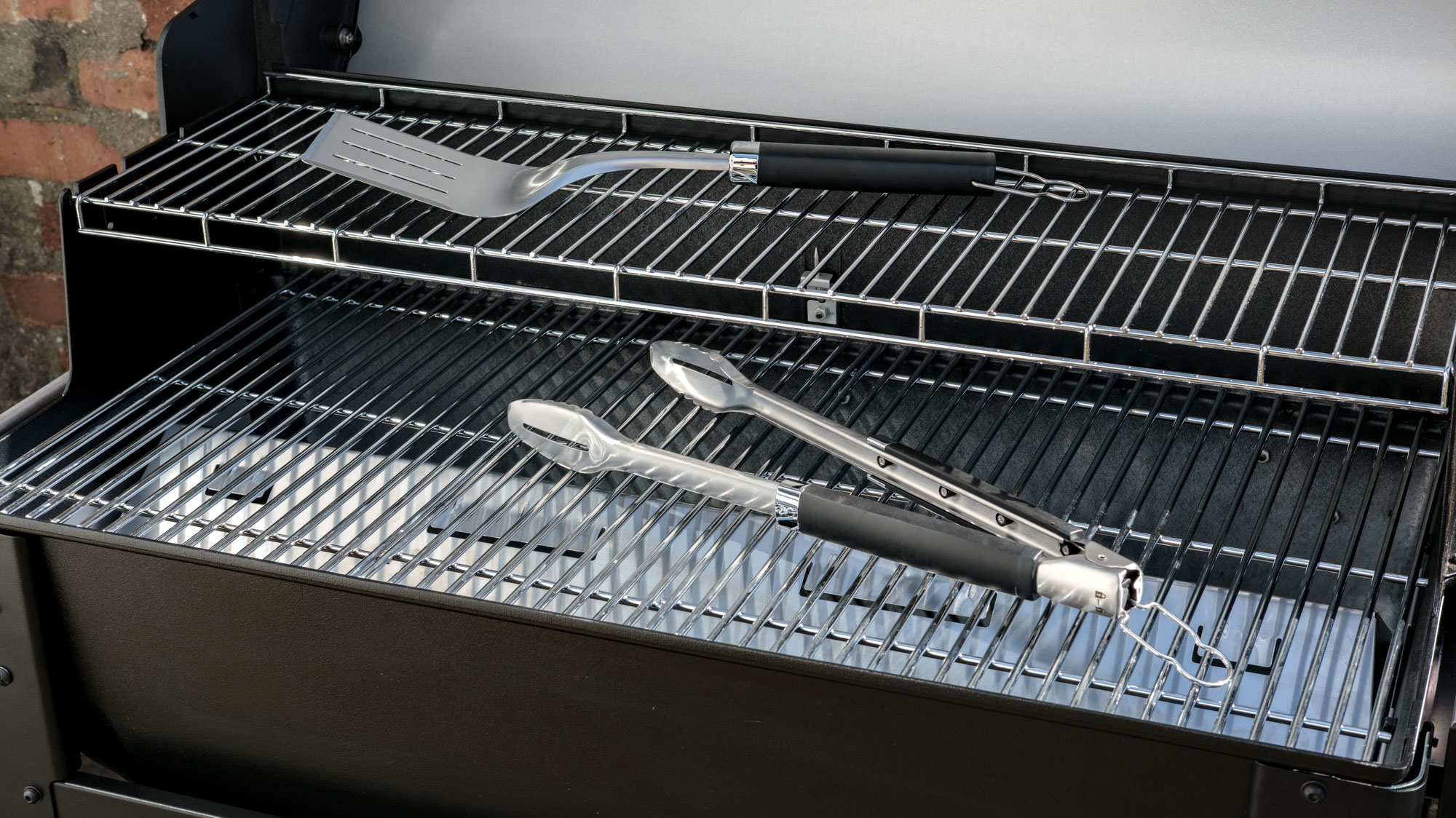
Do you cook for you and your family, or are you gearing up for a series of big gatherings? Both Weber and Traeger offer pellet grills of different sizes to accommodate both scenarios, so this won't be the deciding factor for either brand, but if you’re mostly cooking for your immediate family for backyard barbecues, you’ll want to choose a smaller smoker.
It may be tempting to go big for those ‘just in case’ moments. But keep in mind that a larger smoker will consume more fuel in order to regulate the temperature in a larger cooking area. So you may end up burning more pellets than necessary just to smoke a rack or two of ribs.
A larger capacity lets you smoke more food at once, though also keep in mind that’s more meat you’ll have to monitor.
Of course, if you routinely have family and friends over, and need to get a lot of meat on the grill, by all means, go big! A larger capacity lets you smoke more food at once, though also keep in mind that’s more meat you’ll have to monitor.
If that’s the case, the Traeger app does a nice job of setting you up for success. It has features that automatically inform you how to smoke your meats, and monitors it all in real time to the ideal temperature set forth within the app.
Weber’s app is very good too, but it’s not quite as immersive and handy as the Traeger app.
The Traeger Woodridge is a smart and capable pellet grill that offers 6-in-1 cooking, including smoke, bake, roast, braise, and BBQ. It's now 22% off for a limited time at Amazon, making it an excellent deal on one of Traeger's leading grills.
3. What size hopper is best?
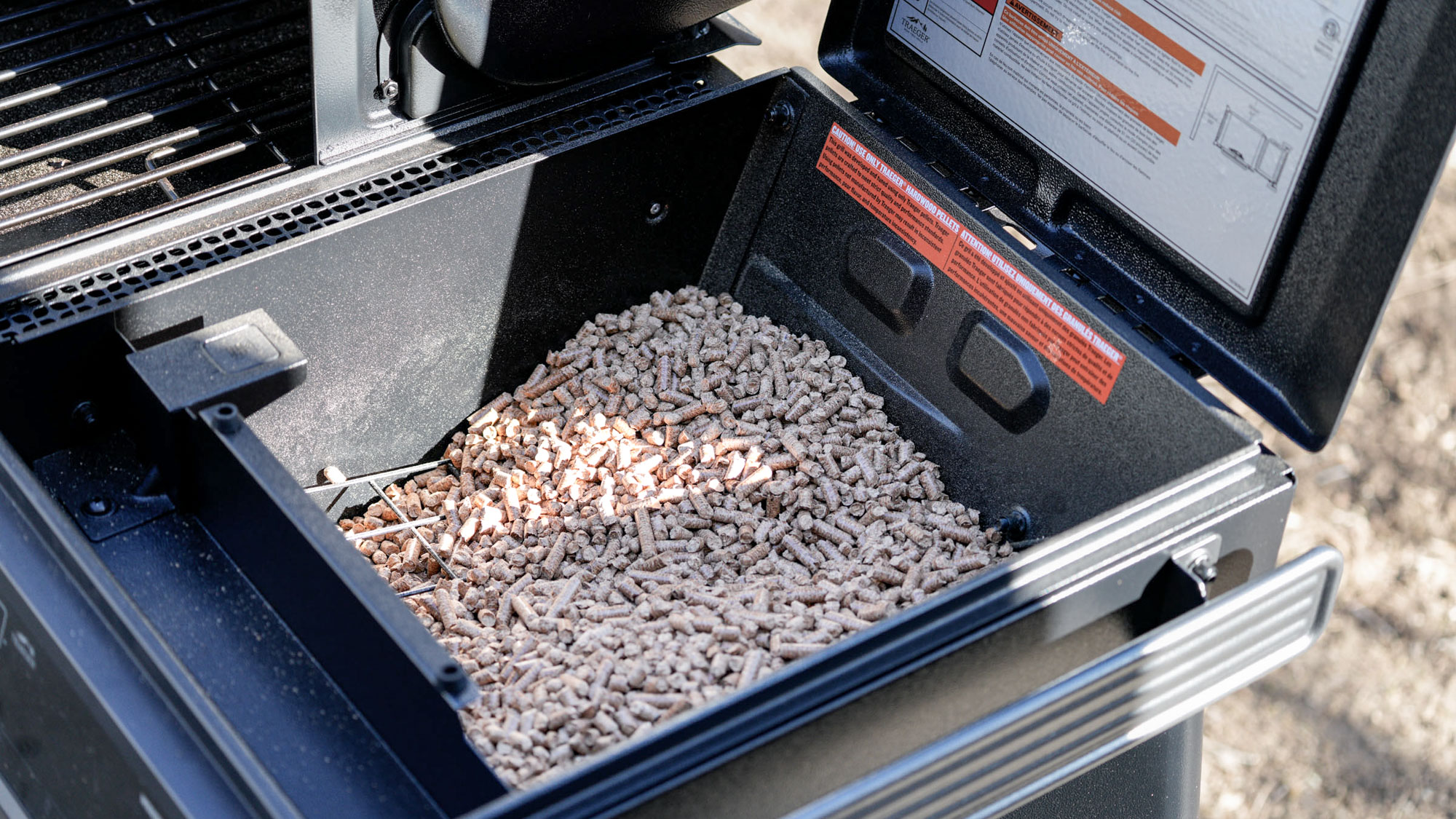
Low and slow barbecue takes time. That means you might have your pellet grill running all day (and maybe all night) long. Consequently, you’ll need a pellet hopper that can handle enough pellets to get you through the entire session.
Both Weber and Traeger offer options with large hoppers, so regardless of which you choose, you should be well set for long smoking sessions. The Weber Searwood XL 600 should be your choice if you're looking for a large capacity from a Weber, and the Traeger Timberline XL also offers plenty of space.
Both brands also come with apps which monitor the hopper as you smoke, so you’ll get alerts should you need to refill.
Keep in mind too that you will need to purchase pellets. While each brand recommends you use their brand of pellets, you should be able to use just about any pellets made for smoking foods with a Weber or a Traeger.
As pellets are a consumable item, you’ll need to factor in the price of refills as part of your smoking experience.
4. How much space do you have?
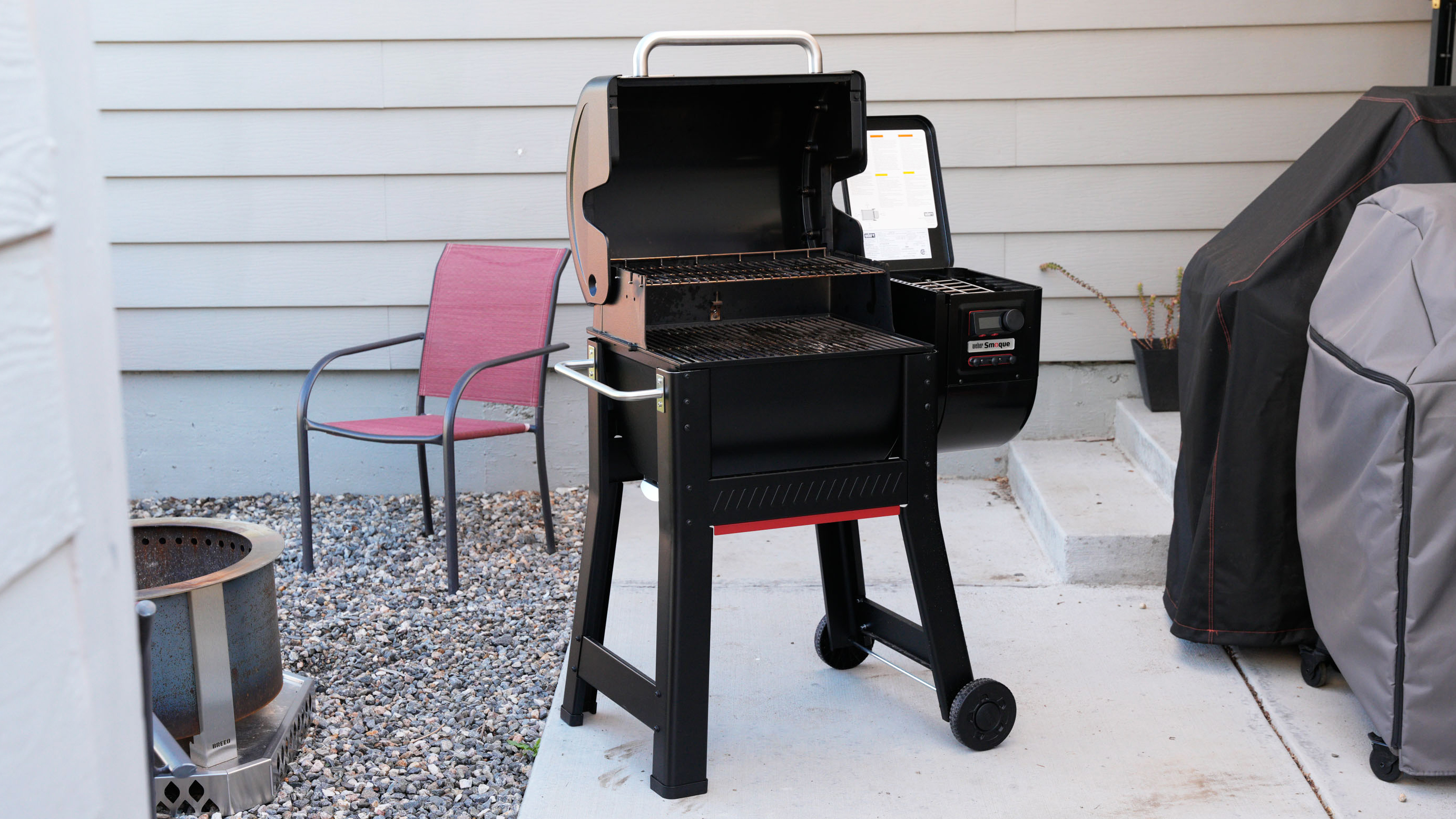
Pellet grills can get quite large quite quickly. So even if you want to feed a lot of people, you’ll need to think of the overall footprint of the grill and where it will live on your patio or in your yard. If you’re short on space, look for a pellet grill that offers ample cooking space in a small footprint.
Weber’s Smoque is a good example of a spacious cooking area in a small footprint. It doesn’t skimp on hopper capacity, and you can definitely pack a lot of food within.
You will, however, lose out on a side prep table, which the Traeger Woodridge offers in spades. It even features a side burner! We've tested both the Smoque and the Weber Searwood, and neither offers side shelves or storage space for accessories. That said, you can always buy the side table accessory and add it later if you want.
Both Weber and Traeger offer plenty of options for different sizes and use cases, so you’re in luck if you prefer one brand over the other. But overall, Weber offers pellet grills with smaller footprints, so if you’re tight on space, lean toward a Weber.
5. Do you need accessories?
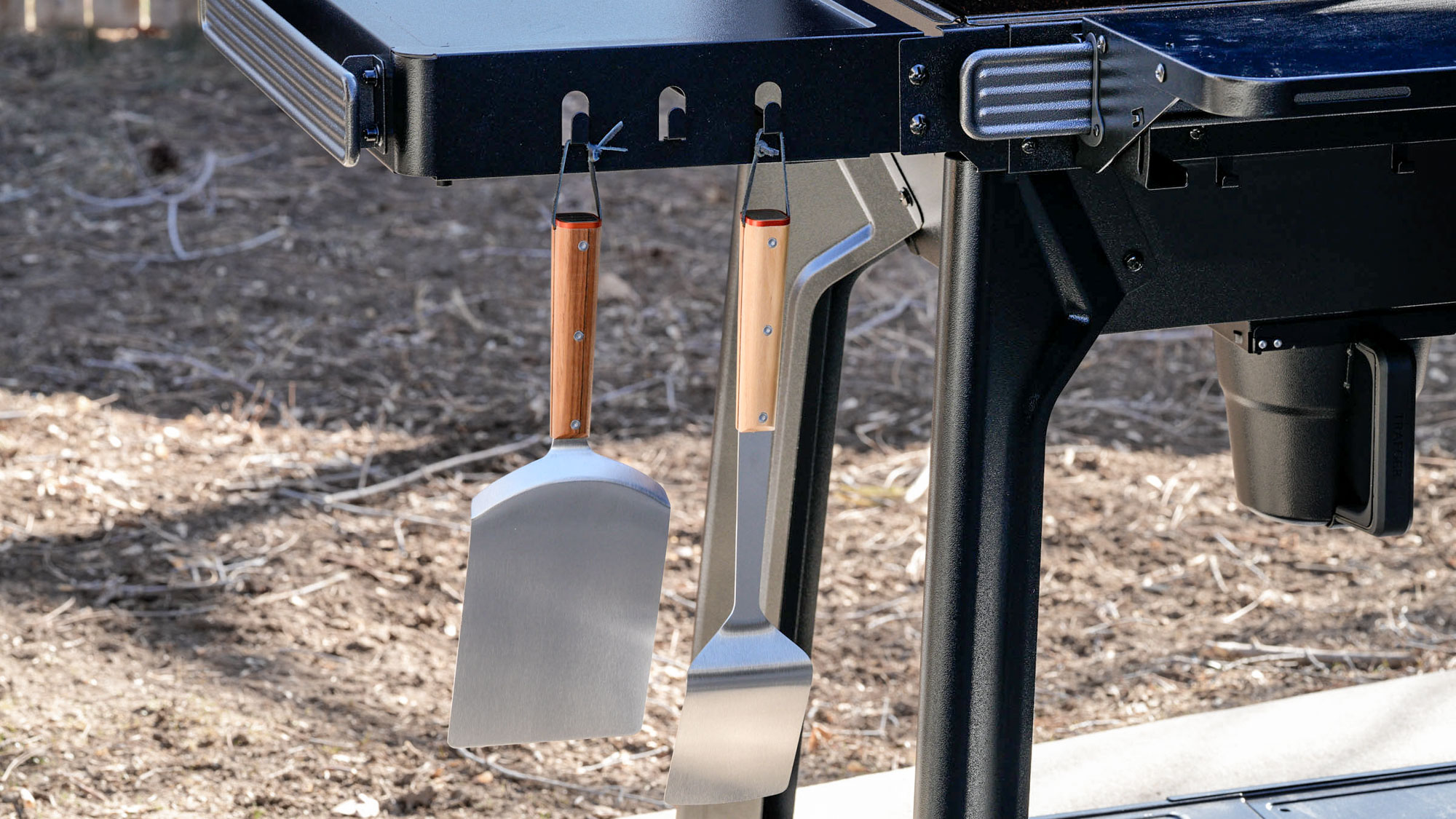
Both Weber and Traeger offer a ton of accessories to go with their pellet smokers. Once again, this will largely come down to personal brand preference. Traeger does have a slight edge in the accessories department, however.
While Weber’s accessories offerings are deep, Traeger’s accessories run a wider gamut. And in my experience, Traeger accessories have a higher-end look and feel to them.
That’s not to say Weber’s accessories are bad, or low-end. But it’s clear Traeger has put a lot more thought into not only the usefulness of its accessories, but also the look and feel.
A grill and workspace that looks great and functions well is one you’ll want to use frequently.
My verdict
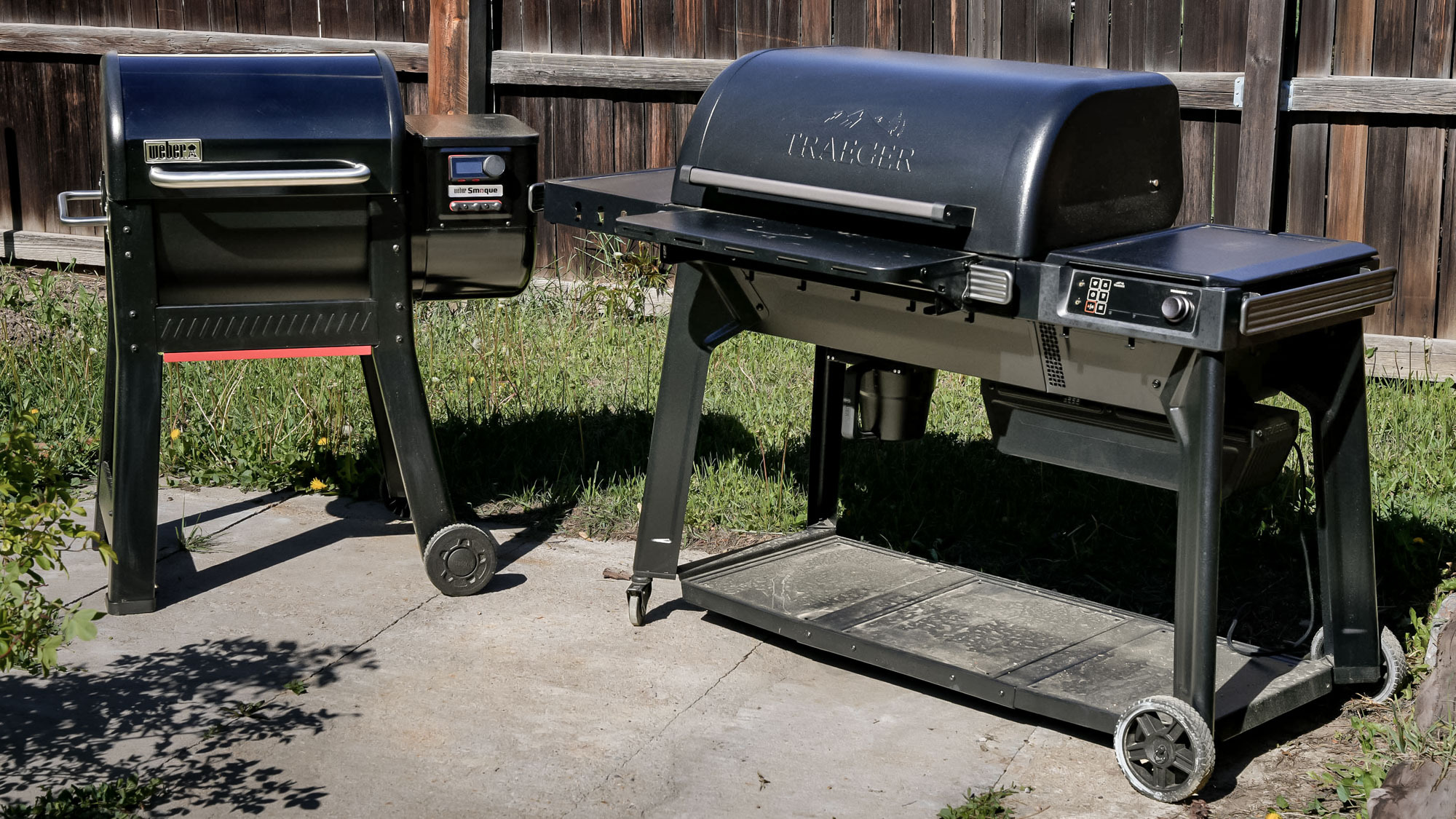
I know it’s not helpful to hear this, but you really can’t go wrong with either Weber or Traeger. Both offer well-built, high-quality pellet smokers that will make your backyard barbecuing easy and delicious. So ultimately, it comes down to which brand you like better.
To tip the scales, Traeger smokers tend to be super versatile, and they do very well at both smoking and grilling. And Traeger’s accessory offerings edge out Weber.
Weber pellet grills are built like tanks, and you’re likely to get years and years out of them. Weber also offers super powerful smokers with smaller overall footprints, so if you’re short on space, look here.
I gave the Traeger Woodridge Pro a rare 4.5-star review, but Tom's Guide's Reviews Editor Peter Wolinski awarded the Weber Searwood the same honor, so you're getting a good option either way. So take solace knowing that you’re getting a top-quality product from either of these powerhouse brands.
More from Tom's Guide

Dan Cavallari is the former technical editor for VeloNews Magazine, who currently reviews electric bikes, bike lights, and other bike accessories for Tom's Guide. In addition to VeloNews, his work has appeared in Triathlete Magazine, Rouleur Magazine, CyclingTips.com, Road Bike Action, Mountain Bike Action, CycleVolta.com, Tomsguide.com, and much more. Dan also hosts two podcasts on his site, Slow Guy on the Fast Ride: One is about cycling and other outdoor activities, while the other looks at mental health issues. Most recently, Dan also covered the 2022 Tour de France. Dan lives outside of Denver, Colorado with his family.
You must confirm your public display name before commenting
Please logout and then login again, you will then be prompted to enter your display name.
